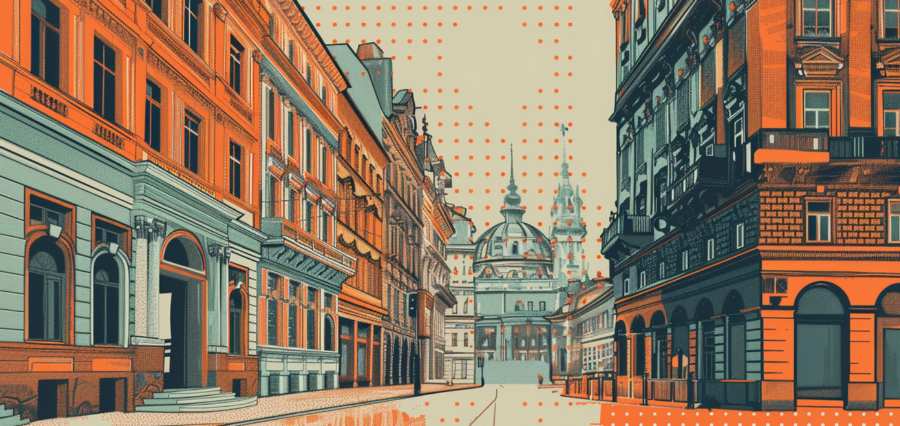Navigating this contrast sharpens not only your visual reflexes but your sense of storytelling through space, shape, and the awkward beauty of urban contradictions. If you’re the sort of photographer who can’t decide between shooting a steel-and-glass corporate cube or a vine-covered alleyway, Basel might just force your hand—and in doing so, make it steadier.
Why Juxtaposition Works Harder Than Symmetry
Symmetry is neat. Symmetry is safe. But juxtaposition? That’s the photographic equivalent of letting your camera go off its leash. When done well, it teases the brain, creates tension, and invites longer gazes. It’s the reason someone might stare at your photo long enough to wonder if that brutalist parking garage really *is* crushing the spirit of the medieval bell tower behind it. (It is. That’s the point.)In Basel, these moments are everywhere. There’s the Altstadt’s Gothic arches giving way to tram wires and Helvetica signage. Graffiti leaning against pristine facades. Ancient fountains being admired by people who just paid €9 for a coffee that tastes like an existential crisis. It’s not just contrast for its own sake—it’s contrast with personality. Your job is to spot it before it vanishes behind the next construction tarp.
Exercises for the Visually Ambitious
You don’t sharpen your compositional instincts by hoping a good photo jumps into your lens. Basel rewards the patient and the methodical—those willing to slow down and build their visual vocabulary deliberately. Try these:- The Old Meets New Count: Walk a street and count how many moments of architectural contrast you can find within one block. Don’t photograph anything until you hit ten.
- Forced Pairing: Choose two unrelated subjects—say, a historical statue and a trash bin—and find a frame where they both make sense. Bonus points if it feels accidentally poetic.
- Reflection Roulette: Use shop windows to create layered compositions that combine the past and present. If you accidentally capture your own confused expression, even better.
Dealing with Basel’s Visual Clutter (Without Crying)
Let’s be honest: some of Basel’s best compositions are buried under layers of overhead tram wires, poorly placed recycling bins, and the occasional tourist in a neon windbreaker. It’s tempting to despair. Don’t. Use it.That tangle of wires? Use it to frame your subject. The orange bin? Make it the subject. The windbreaker? Okay, that one might take some editing. But part of training your photographic eye is embracing mess and making it intentional. You’re not curating a museum—you’re capturing a city as it lives and breathes and sometimes wears socks with sandals.
Looking Beyond the Postcard
Everyone’s seen the classic Rhine river shot—the tidy rows of houses, the picturesque bridge, the polite water. You can shoot that too, but don’t stop there. If your camera only captures what the souvenir stand already sells, you’re just doing free PR for the tourism board.Instead, position yourself with your back to the postcard. Turn around and photograph what tourists ignore: the construction scaffolding, the quietly decaying balconies, the odd juxtapositions of wealth and wear. One minute you’re shooting an art installation outside a museum; the next, you’re framing a shot of an elderly man angrily feeding pigeons next to a Bluetooth speaker blasting techno. That’s Basel. That’s worth capturing.
Let Architecture Be Awkward
In cities like Basel, the layering of styles isn’t just architectural—it’s emotional. Some buildings seem confused about what century they’re in. Let them be. Photograph that cognitive dissonance. Frame the sleek steel lines of the Messeplatz building right next to a lopsided baroque cornice. Make your photos feel like arguments between generations. Like the city is trying to finish a sentence it started 400 years ago.One trick is to use harsh shadows or reflections to isolate or emphasize different architectural styles within a single frame. Tilt your camera. Break the horizon. Make lines fight each other. If you think your shot feels a little wrong, it’s probably close to right.
When in Doubt, Follow the Light
Light doesn’t care what century a building came from. It just does its job—slanting beautifully across a row of arches, flaring off a metal roof, reflecting in a puddle next to a bike rack that probably shouldn’t be there. If you ever feel overwhelmed by the visual density of the city, let light simplify it for you. It carves order into chaos.One powerful habit is to revisit the same street or square at different times of day. That forgettable facade at noon might become an accidental masterpiece by 7:15 p.m. when the golden light turns its decay into something mythic. Don’t wait for inspiration—wait for light.
Mind the Gap Between Styles
The most compelling frames often live not in the buildings themselves, but in the invisible lines between them. That awkward half-meter where a Renaissance wall meets a concrete bunker? That’s where the gold is. Shoot it wide, shoot it tight—just don’t ignore it. Juxtaposition lives in margins.Try looking at these transitions like dialogue: what are these two buildings saying to each other? Is it conflict? Indifference? Co-dependence? The more absurd the pairing, the better the chance your photo will make someone stop scrolling.
Contrast and Effect
You don’t need to fly to Basel to sharpen your visual instincts. But if you do find yourself there—with a camera, a spare battery, and just enough Swiss francs to afford a sandwich—you’ll discover a city that never quite sits still. It whispers, it clashes, it occasionally shouts at you in Helvetica.Use it. Let its contrasts punch up your compositional instincts. Let its chaos frustrate you into better framing. And if your shot ends up crooked, blame the tram wires. Everyone else does.
Article kindly provided by felixfoto.ch

